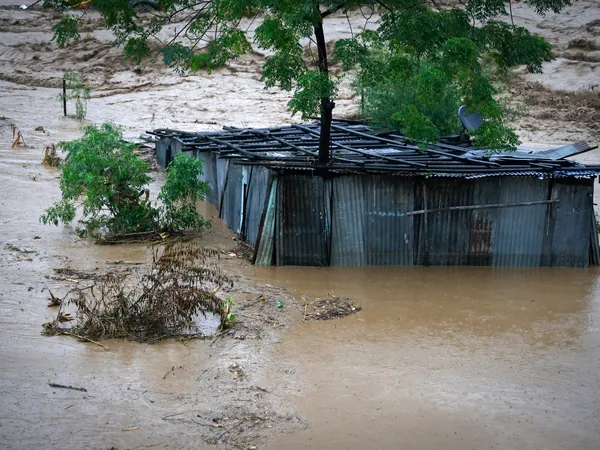
Catastrophic Rains Force School Closures in Nepal: 150 Lives Lost, Cities Paralyzed
2024-09-29
Introduction
In a devastating turn of events, Nepal has been plunged into chaos as relentless heavy rains trigger catastrophic landslides and flash floods, resulting in the tragic loss of approximately 150 lives. In response to the calamity, officials announced that schools in affected regions will close for the next three days to ensure the safety of children and families grappling with the aftermath.
Government Response
Lakshmi Bhattarai, a spokesperson from the Ministry of Education, Science and Technology, confirmed the urgent closure order. With numerous school buildings sustaining damage and risks from unstable environments, it has become paramount to prioritize student safety amidst this crisis.
Situation in Kathmandu
The situation is dire in the capital, Kathmandu, where entire neighborhoods are submerged and transportation networks have crumbled. Over the weekend, flash floods surged through local rivers, exacerbating an already precarious situation. Areas within the city recorded an astonishing 322.2mm (12.7 inches) of rainfall, causing the Bagmati River to rise alarmingly above safety limits, prompting urgent evacuations.
Emergency Response
Tragic scenes unfolded as emergency personnel were seen rescuing victims from mud and debris. Notably, 16 bodies were recovered from two buses that were swept away in a landslide along a critical access route to Kathmandu. Stories from survivors paint a harrowing reality; Kumar Tamang, a resident forced to flee his home, described his eerie escape: “We couldn’t even open the doors to our house, it was jammed with mud,” highlighting the extraordinary struggles facing many.
Weather Forecast
Fortunately, as the storm begins to subside, local weather forecasters predict a brief reprieve, although continued vigilance is advised. “There may be some isolated showers, but heavy rains are unlikely,” said Govinda Jha, offering a glimmer of hope for the afflicted areas.
Impact on Air Travel
In a related note, domestic air travel gradually resumed by Sunday morning, with flights that were previously halted seeing more than 150 cancellations. While this marks a recovery in transportation, the broader implications of this natural disaster are far-reaching.
What Climate Scientists Say
The ongoing summer monsoon season brings a significant portion of South Asia's annual rainfall, but climate experts argue that the increasing frequency of such deadly weather events is linked to climate change. This has led to calls for immediate action; climate scientists from the International Centre for Integrated Mountain Development have urged government officials and urban planners to invest robustly in necessary infrastructure improvements. Enhanced planning for stormwater management, both engineered (grey) and nature-based (green), is critical to mitigating future risks.
Conclusion
The government faces immense pressure to address the complex web of challenges that has aggravated the impact of these rains—poor drainage systems, ongoing urbanization on vulnerable floodplains, and unregulated encroachment of riverbanks have all contributed to a precarious situation that demands urgent interventions.
As Nepal grapples with this unprecedented disaster, the need for resilience and proactive measures against climate change has never been clearer. The nation stands at a crossroads, and the decisions made in these challenging times could define its future.


 Brasil (PT)
Brasil (PT)
 Canada (EN)
Canada (EN)
 Chile (ES)
Chile (ES)
 España (ES)
España (ES)
 France (FR)
France (FR)
 Hong Kong (EN)
Hong Kong (EN)
 Italia (IT)
Italia (IT)
 日本 (JA)
日本 (JA)
 Magyarország (HU)
Magyarország (HU)
 Norge (NO)
Norge (NO)
 Polska (PL)
Polska (PL)
 Schweiz (DE)
Schweiz (DE)
 Singapore (EN)
Singapore (EN)
 Sverige (SV)
Sverige (SV)
 Suomi (FI)
Suomi (FI)
 Türkiye (TR)
Türkiye (TR)